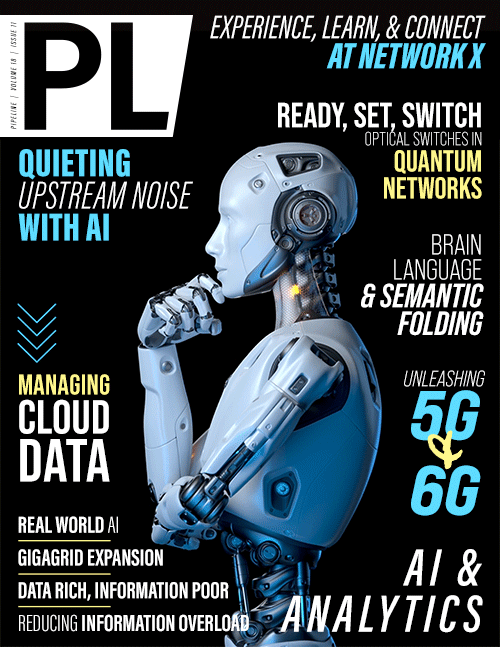Unleashing 5G & 6G with
AI-empowered Automation
- Trigger an action based on the AI output to support closed-loop automation while understanding the output is important for correctly applying the decisions or recommendations.
- Govern and supervise the AI-empowered operations. AI results must be reliable, measurable, interpretable and accountable. The AI applications should adhere to applicable laws, regulations, ethical principles and values, and be robust against adversarial threats and missing or erroneous data.
- Express requirements and constraints for the deployment of the AI applications.
ETSI ZSM 008 defines how to manage the lifecycle of cross-domain, end-to-end (E2E) services. It describes the management processes during the lifecycle of E2E services (service onboarding, fulfillment and assurance) and describes the interactions between E2E service management domain and management domains. ETSI ZSM 003 focuses on the E2E aspects of network slice management, supporting vertical use cases and related SLAs (service-level agreements).
The ZSM framework
Automation is not only about technology; it also requires changes in our mindset. Trust is a major barrier to adoption and striving to build it requires a continuous learning process. As more automation processes are deployed and operate safely and efficiently, human trust will increase and the requirement for a level of supervision and intervention will diminish. Having native security (as in an adaptive secured framework, access control, trustworthiness, and data protection) can help to establish confidence and instill trust as the automated processes deliver the intended business outcomes.
The threat surface in the ZSM environment is extensive because of the openness of the framework. Protecting the interfaces and the management services within and across the domains is essential to ensure the trustworthiness of the framework.
In addition, the ZSM services can be produced and consumed by new players coming from diverse industries, including government, vehicle manufacturing, energy, transportation, and more. Each player may require different trust levels according to its own deployment and execution environments, security policies and regulations. This variety demands flexible and adaptive security control.
Furthermore, the ZSM framework leverages emerging technologies, such as AI/ML, data lake, cloud, and more, which introduce new vulnerability to attacks and impose additional security requirements. For example, it is necessary to ensure trustworthiness and shield the AI/ML algorithms from highly sophisticated, creative, and malicious attacks, including abuse, trolls, data poisoning, and model rescue. Moreover, it is critical to protect data, ensuring its integrity, confidentiality, and availability, and to preserve privacy to comply with security laws and regulations. At the same time, the ZSM framework can take advantage of these emerging technologies to increase security management efficiency. For example, using AI/ML-empowered analytics to trigger actions can help to automate security monitoring and a real-time response to incidents.
ETSI ZSM 010 presents a comprehensive security study identifying and analyzing potential security threats and assessing the related risk scores and priorities. The report proposes mitigation options, countermeasures, and security controls to address the threats and risks to the ZSM framework and solutions. The ZSM group is working to specify requirements and security capabilities (ETSI ZSM 014) to support the automatic security assurance of the ZSM framework, management application and services.
End-to-end automation is a “big deal” and represents the industry’s ongoing journey. The use of AI/ML will evolve incrementally and learnings from real deployments need to be fed into the standardization work. Intent-driven network and service and slice automation will be key elements to provide a zero-touch, zero-problem experience and to simplify automation by hiding the complexity of the federated telco capabilities.
Experimental and showcase ZSM solutions are essential to demonstrate the viability of the technology. View a list of current ZSM Proofs of Concepts (PoCs). The different players in the value chain are welcome to demonstrate PoCs and contribute to the automation journey.



















